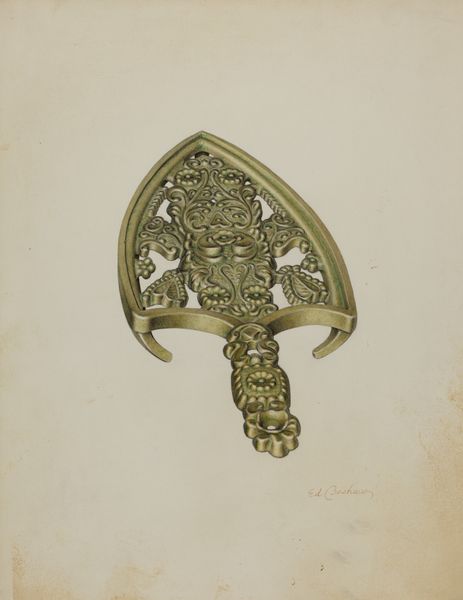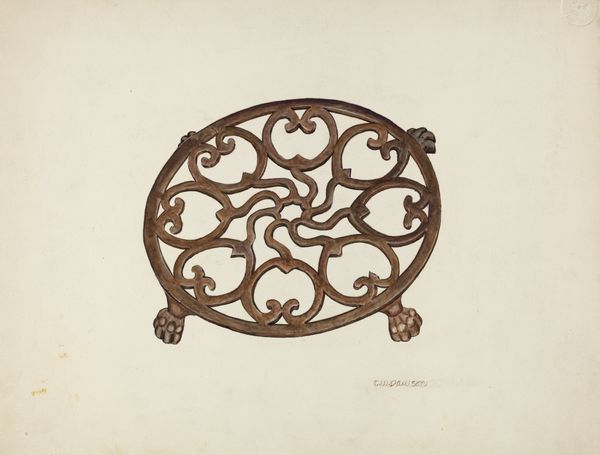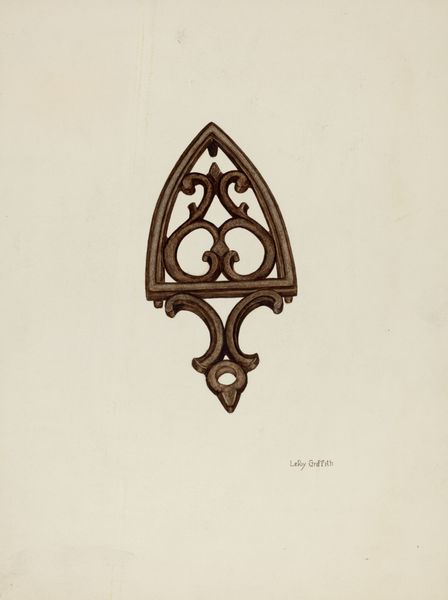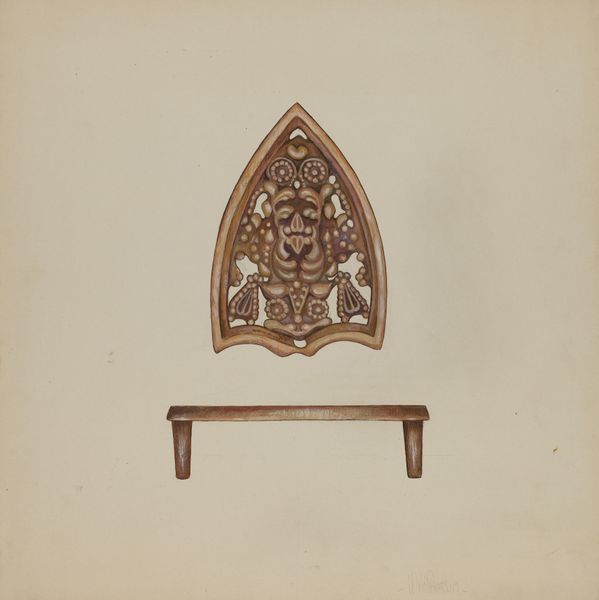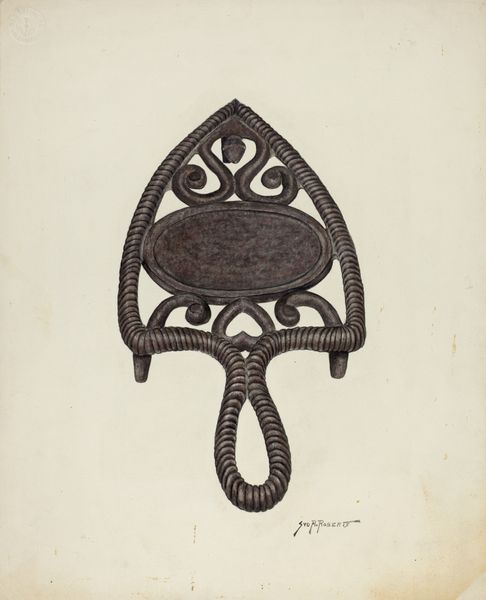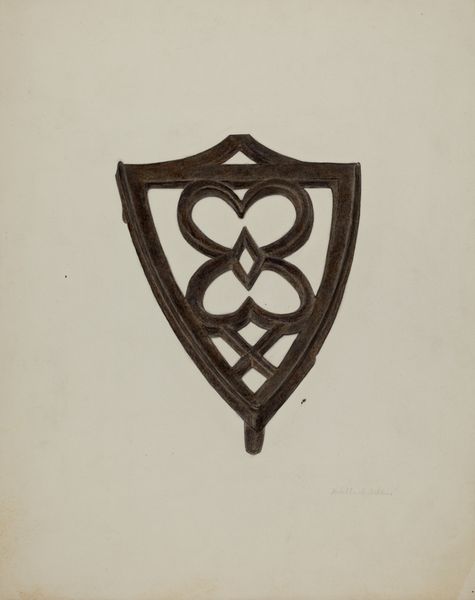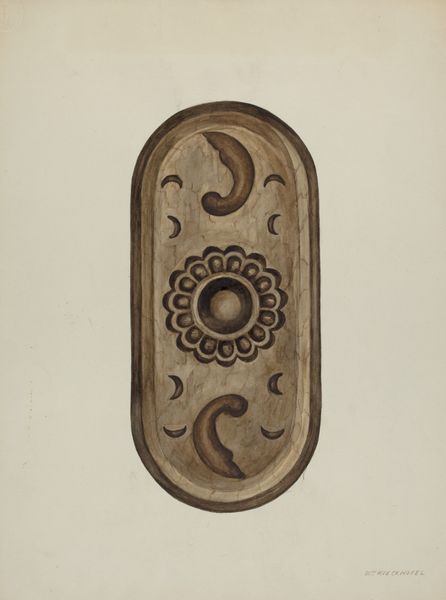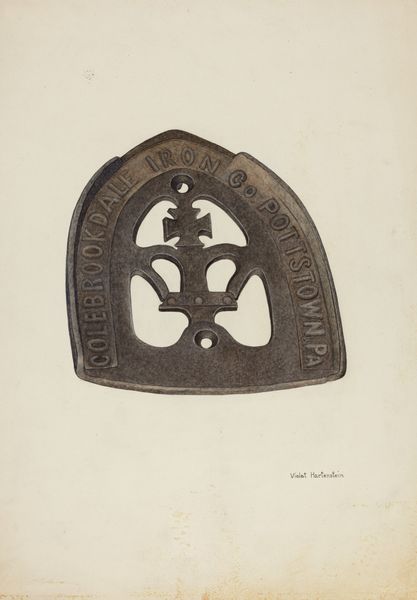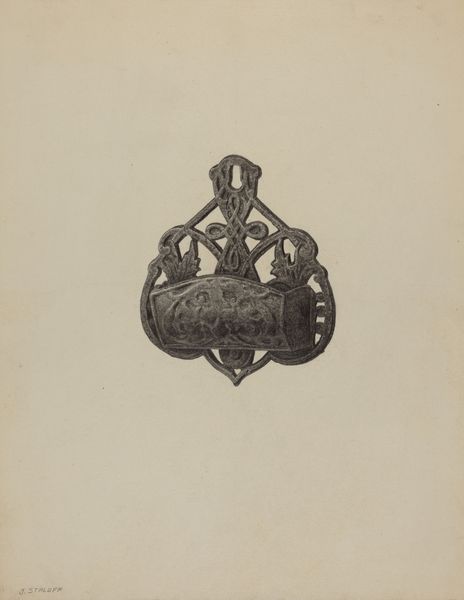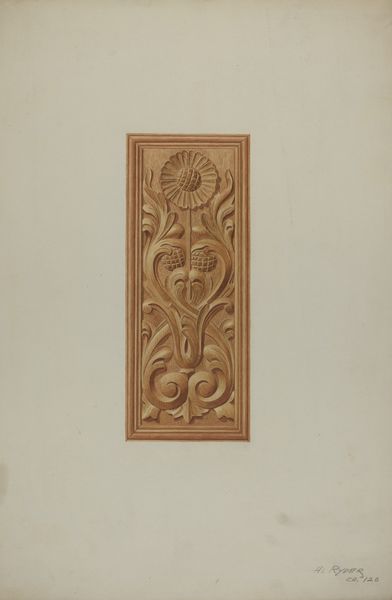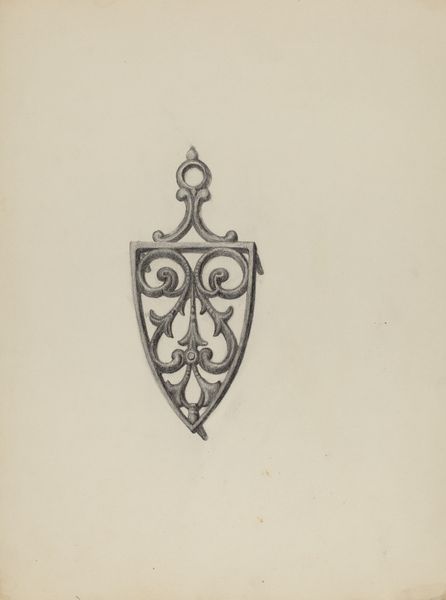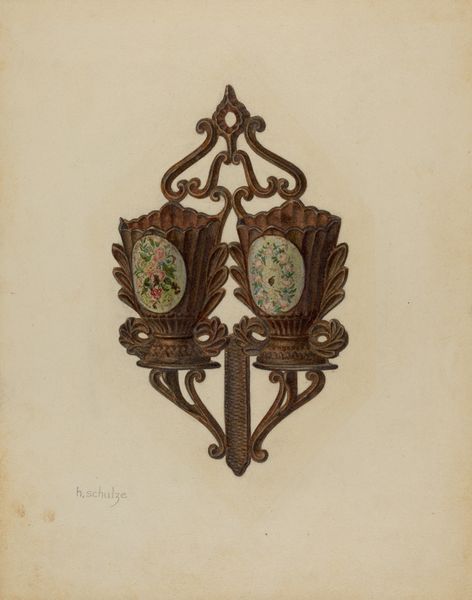
drawing, paper, graphite
#
pencil drawn
#
drawing
#
paper
#
graphite
#
realism
Dimensions: overall: 35.4 x 24.4 cm (13 15/16 x 9 5/8 in.)
Copyright: National Gallery of Art: CC0 1.0
Curator: Before us is "Trivet," a drawing executed around 1941 by Glenn Wilson, using graphite on paper. It renders, in surprising detail, an ordinary household object. What strikes you immediately about this piece? Editor: There's a certain... weightiness to it. It's just a humble trivet, something meant to sit under a hot iron, yet Wilson’s rendering in graphite gives it a solemn, almost monumental presence. It also draws my attention to labor, in a quiet way. Curator: Precisely. The trivet is indeed more than just an object. It represents a specific moment when domestic labor, primarily done by women, began to transform. The Rosenbaum Mfg. Co. of New York, whose name is emblazoned on it, connects us to that history. It asks: who made this? For whom was it made? And what does it mean to elevate it to art? Editor: That's fascinating, because, to my eye, the drawing technique emphasizes the mass-produced quality of the object itself. The graphite lines painstakingly recreate the intricate, cast-iron design, pointing towards industrial processes of replication and consumption. The medium itself, drawing, highlights its reproducibility as design, available and affordable. Curator: True, yet consider the context of 1941. America teetering on the edge of war, massive shifts in social structures, and new anxieties around gender roles. Rendering this object in such detail also seems like a kind of preservation, a way to give value to everyday existence at a time of tremendous precarity. Editor: I can see that. It brings to mind the labor that created not only the trivet, but the act of laboriously representing this functional object with drawing—the production of image from the labor-intensive crafting that produced the artifact itself. The tool itself has lost utility but in this form is elevated. Curator: Yes, the intersection of gendered domestic work and the dignity inherent to labor overall, certainly. And it reminds us that history resides even in the humblest tools, like this iron stand rendered with such quiet strength. Editor: It is amazing how a drawing of a single manufactured object reveals layers of history and shifts our perspectives on production, materiality and even art. Curator: Absolutely. "Trivet," through Wilson's hand, becomes an object lesson about looking, making, and valuing.
Comments
No comments
Be the first to comment and join the conversation on the ultimate creative platform.

